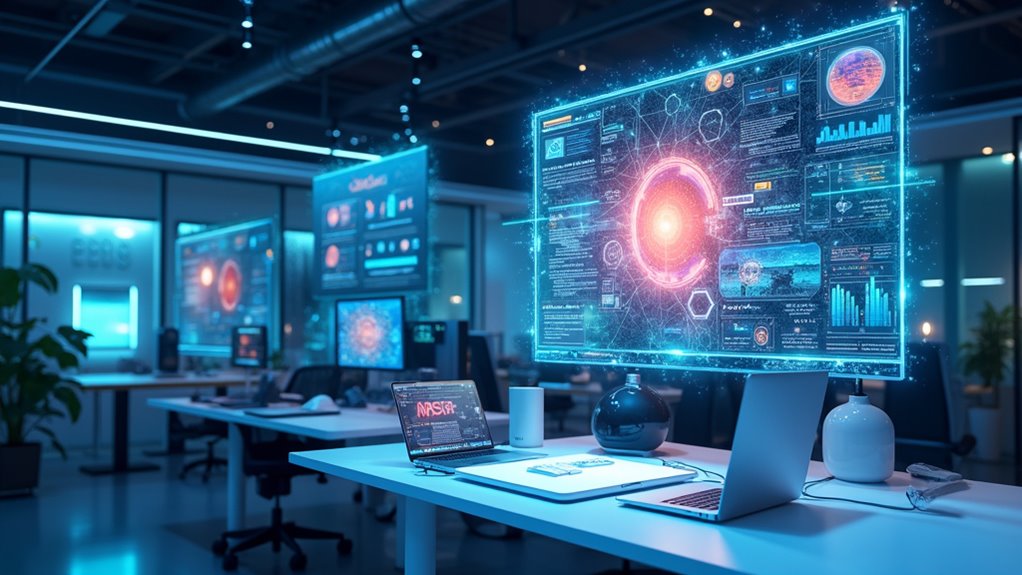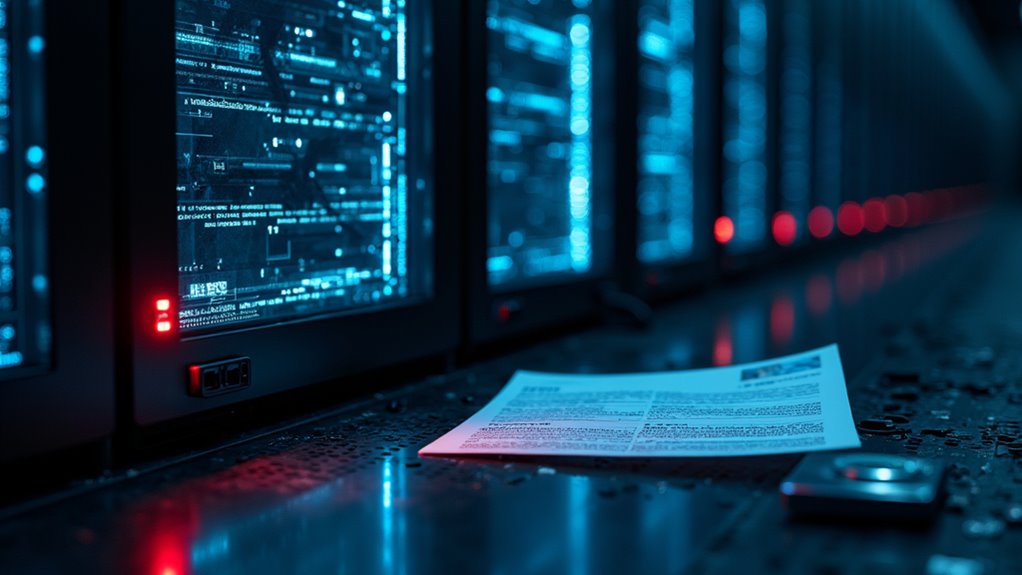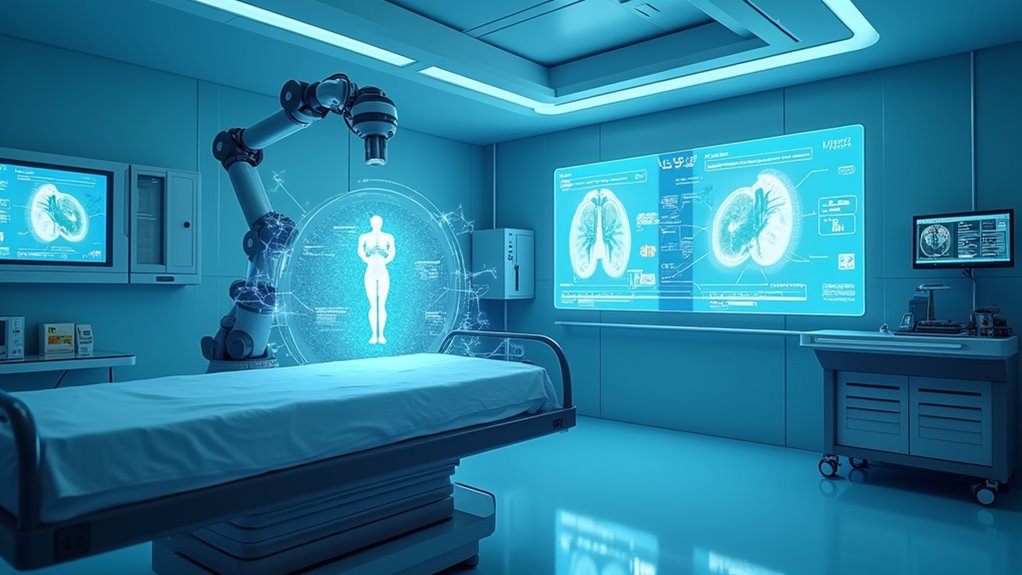Humans need to shift from viewing AI as competition to embracing it as a complementary partner. Establish clear ethics, accountability, and communication channels early on. Don’t skip governance frameworks—the regulatory landscape is still evolving. Keep humans in charge of critical decisions while letting AI handle routine tasks. Upskill continuously and scrutinize AI outputs for bias. The future isn’t about superior AI, but strong human-AI teams working in tandem. The partnership potential awaits those who prepare properly.

Maneuvering the complex world of artificial intelligence demands both strategic thinking and a healthy dose of humility. Effective AI Engagement begins with acknowledging the complementary nature of human and machine intelligence—they’re partners, not rivals. Organizations must establish clear Ethical Considerations from the outset, addressing thorny questions about accountability and transparency before problems emerge. Well-designed systems prioritize mutual respect as the foundation for successful human-AI partnerships.
Remember, that fancy algorithm can’t explain its decisions? That’s a red flag, not a feature.
Humans need to develop robust communication channels with AI systems. This doesn’t mean literally chatting with chatbots (though that happens too), but rather creating frameworks where AI outputs are interpretable and humans can provide meaningful feedback. Trust-building isn’t optional—it’s essential. When staff view AI as augmentation rather than replacement, adoption rates soar and resistance plummets.
Creating interfaces where humans understand AI isn’t a luxury—it’s the foundation upon which successful adoption is built.
The regulatory landscape resembles the Wild West, with laws struggling to keep pace with technological advancement. Organizations must proactively establish governance frameworks rather than waiting for legislation to catch up.
Continuous learning sits at the core of effective human-AI collaboration. This isn’t just about AI improving through feedback; humans must upskill constantly to remain relevant partners. Researchers should always scrutinize AI-generated results for potential biases that could adversely affect vulnerable populations.
Privacy and data security cannot be afterthoughts. Who owns the data? How is it protected? These questions demand answers before implementation, not after breaches occur. The most successful organizations maintain human oversight of AI operations, especially for critical decisions that affect people’s lives.
Balancing efficiency with creativity represents perhaps the greatest challenge. AI excels at pattern recognition and data crunching but falls flat on creative thinking. Smart leaders leverage AI for routine tasks while directing human talent toward innovation and complex problem-solving. Implementing data quality standards is crucial as poor data inputs inevitably lead to unreliable AI outputs regardless of algorithmic sophistication.
Education programs must emphasize collaboration rather than competition. The narrative shouldn’t be “AI vs. humans” but “AI + humans.” By understanding their complementary strengths, organizations can create synergies that neither could achieve alone. The future belongs not to those who build the best AI, but to those who build the best human-AI teams.
Frequently Asked Questions
Can AI Completely Replace Human Decision-Making?
AI cannot completely replace human decision-making.
While machine learning excels at data processing and prediction, it lacks understanding of nuanced social contexts and ethical implications.
AI suffers from “learning myopia,” focusing on narrow perspectives based on historical data.
Humans bring diverse experiences, contextual knowledge, and moral reasoning that machines simply can’t replicate.
The future isn’t about replacement, but partnership—combining AI’s computational power with uniquely human judgment, creativity, and ethical understanding.
Trust me, we’re still needed.
How Will AI Affect Employment Across Different Industries?
AI’s impact on employment varies dramatically by industry.
Manufacturing and customer service face significant job displacement due to automation, while healthcare and tech sectors are experiencing growth.
Workers must embrace skill adaptation – those comfortable with critical thinking and creativity will thrive, while routine-task workers need retraining.
By 2030, AI will likely create more jobs than it eliminates, but not necessarily for the same people.
The message? Adapt or be left behind, folks.
What Privacy Concerns Arise With Widespread AI Adoption?
Widespread AI adoption raises major privacy alarms that shouldn’t be ignored.
AI systems gobble up massive amounts of personal data—often without proper user consent—creating perfect targets for breaches. Data security becomes increasingly difficult as these systems process information in non-transparent ways.
Most consumers (74% of Americans) rightfully view AI as a serious privacy threat. The regulatory landscape is playing catch-up, leaving your digital footprint vulnerable while companies rush to implement the latest AI technologies.
Who Bears Responsibility for Ai-Caused Damages or Harm?
Responsibility for AI-caused harm typically falls on multiple parties in a complex chain.
Developers face liability for design flaws, operators for implementation errors, and users for misuse.
Current liability frameworks struggle to address AI’s unique challenges—who’s accountable when algorithms make autonomous decisions?
Accountability mechanisms are evolving through regulations like the EU’s AI Liability Directive, which aims to clarify responsibilities.
The truth? Everyone wants AI benefits, but nobody’s keen to shoulder blame when things go sideways.
How Can We Ensure AI Benefits All Socioeconomic Groups?
Ensuring AI benefits everyone requires equitable access and inclusive design from the ground up.
Developers must create systems that work for diverse populations, not just the privileged few. Governments should invest in digital infrastructure for underserved communities while companies need to prioritize accessibility features.
Meanwhile, robust education programs must prepare all socioeconomic groups for an AI-integrated world. Without these deliberate steps, AI will simply amplify existing inequalities—creating a high-tech divide between haves and have-nots.








